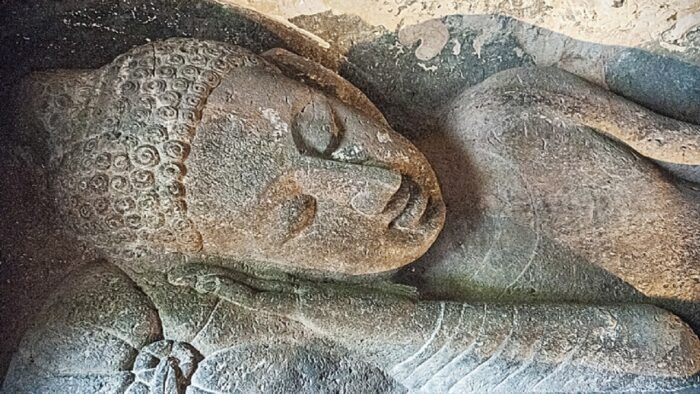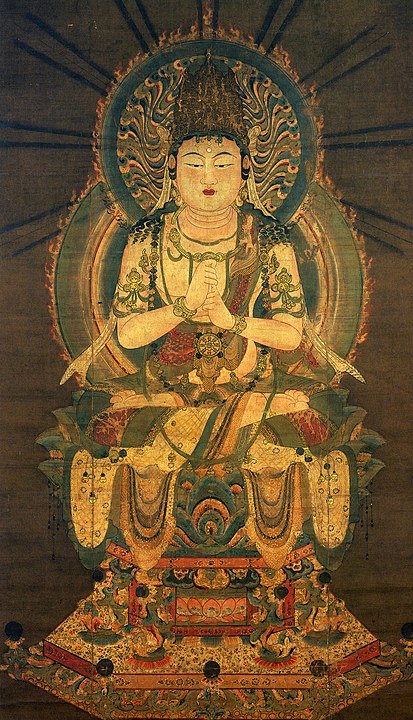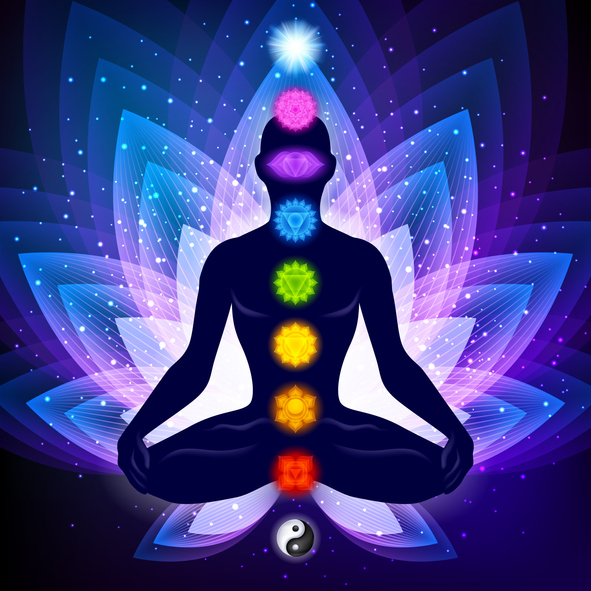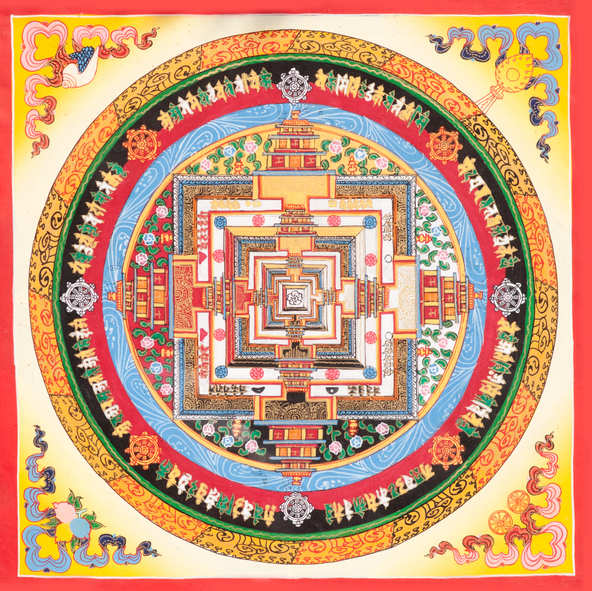Introduction
Tantra and Tantric traditions are a significant aspect of Buddhism, particularly within certain branches of the religion such as Vajrayana Buddhism. While, Vajrayana Buddhism is also known for Tantric ideas and practices, which are mainly based on Indian Buddhist Tantras1, they comprise Japanese Shingon Buddhism, Nepalese Newar Buddhism and Indo-Tibetan Buddhism. Tantra refers to a set of practices and teachings that emerged in India around the 5th century CE and later spread to various Buddhist traditions. The roots of Tantra can be traced back to ancient India, where it emerged as a distinct spiritual and philosophical movement around the 5th century CE. Tantra incorporated elements from indigenous Indian traditions, including ritual practices, esoteric techniques, and the worship of deities. It also drew influences from other spiritual systems prevalent at the time, such as Shaivism, Shaktism, and elements of Vedic and Yogic traditions.
The Tantra and Tantric tradition originated in India and has roots in Hinduism, thereafter it also influenced Buddhist practices. The development of Tantra in Buddhism was a response to the need for more expedient and powerful methods of achieving enlightenment. Tantra is most closely associated with Vajrayana Buddhism, which is practiced primarily in Tibet, Bhutan, and certain regions of Nepal and Mongolia. Vajrayana is often referred to as the “Diamond Vehicle” or the “Thunderbolt Vehicle” due to its emphasis on utilizing the transformative power of Tantra2. Tantra places great emphasis on skilful means (Sanskrit: upaya) for spiritual advancement. It acknowledges that different individuals have different capacities, and thus, a variety of methods and techniques are employed to cater to these varying needs. Tantra incorporates visualization, meditation, mantra recitation, ritual practices, and yogic techniques. The early known dateable tantric text is the development of Mahāvairocana Tantra (mahāvairocanābhisaṃbodhi-tantra) which was composed about the mid-7th century and was believed, to be one of the texts collected by the Chinese pilgrim Wu-xing 680 CE3. The Wu-xing also remarked on the appearance of a new “teaching about mantra”, that was much admired during the duration of his time in India4.
(Figure 1: Credit: Wikipedia: A 12th century painting of Mahāvairocana)
According to some scholars that the growth of tantra may have been prejudiced by the community of nature spirit-deities like Yaksas and Nagas. while the Yaksa community were an important part of near the beginning of Buddhism. Yaksas are influential natural world spirits which are occasionally seen as protectors or guardian5. Yaksas like Kubera are also connected with magical chants. Kubera is supposed to have provided the Buddhist sangha with protection enchantment in the Ãţānāţiya Sutta6.
Tantra and tantric tradition gained popularity and widespread acceptance within Indian Buddhism from the 7th century onwards. During this period, numerous tantric texts, known as Tantras, were composed, providing detailed instructions on rituals, meditation practices, deity yoga, and philosophical insights. Tantric Buddhism attracted a significant following and influenced other Buddhist schools and lineages in India. Tantra is a complex and multifaceted term that can be understood in various ways depending on the context. It encompasses a range of spiritual and philosophical traditions found in both Hinduism and Buddhism, as well as in other Indian spiritual systems. While Tantra can be approached from different perspectives, here are some key defining characteristics of Tantra and tantric traditions.
Definition of Tantra and Tantric traditions
Tantra embraces a holistic view of reality, recognizing the interconnectedness of all aspects of existence. It emphasizes the integration of the physical, energetic, emotional, and spiritual dimensions of life. Tantra places a strong emphasis on practical application and direct experience. It seeks to transform ordinary experiences into paths of spiritual realization. Tantra engages with the world and encourages practitioners to explore the full range of human experience as a means to spiritual growth. Tantra employs a wide array of practices, including rituals, ceremonies, mantra recitation, meditation, visualization, energy cultivation, and deity yoga. These practices often involve the use of sacred texts, symbols, mandalas, and rituals to invoke and embody the divine. Tantra acknowledges the presence and significance of subtle energies within the body and the universe. It seeks to understand and harness these energies through various techniques, such as breath work, energy channelling, and the awakening of dormant potentials. Tantra recognizes the divine feminine as a powerful aspect of the spiritual path. It celebrates and honors the feminine principles of creativity, intuition, and nurturing. Both male and female practitioners are encouraged to embrace and integrate these qualities within themselves. Tantra places importance on the relationship between the teacher (guru) and the student (disciple). The guru serves as a guide and spiritual mentor, transmitting teachings, initiations, and empowerments to the disciple. Tantra often emphasizes a non-dualistic worldview, transcending the dichotomy of good and evil, sacred and profane, and self and other. It recognizes the inherent interconnectedness and unity of all phenomena and seeks to realize the ultimate nature of reality. It is essential to note that Tantra can be approached and interpreted in diverse ways within different traditions and lineages. There are variations in practices, rituals, textual sources, and philosophical frameworks across the different tantric traditions within Hinduism and Buddhism. While Tantra has gained a reputation for its sexual rituals and practices, it is important to understand that these aspects represent only a small fraction of the broader tantric tradition. Tantra encompasses a vast range of teachings and practices aimed at spiritual transformation, self-realization, and the attainment of enlightenment. This is a general overview of Tantra and Tantric traditions, and it is worth exploring specific traditions and lineages to gain a more in-depth understanding of their unique characteristics and practices.
The tantric, an English word derived from the Sanskrit term tāntrika, it means just that which relates to the tantras, the variety of scripture that serves up as the canonical basis for the diverse tantric traditions. While the Tantras are works that largely focus on rite and meditative practices, hence the term tantric also encircles the practices linked with these scriptures, which had traditionally been disseminated by the tāntrikas (the Sanskrit term also designates tantric practitioners), along with the texts7.
The word Tantra, in Indian customs, also means any organized broadly relevant “text, theory, system, method, instrument, technique or practice”7 A key aspect of these customs is the use of mantras, and therefore they are usually referred to as Mantramārga (“Path of Mantra”) in Hinduism or Mantrayāna (“Mantra Vehicle”) and Guhyamantra (“Secret Mantra”) in Buddhism9.
One distinctive feature of Tantric Buddhism is the practice of deity yoga. Practitioners visualize themselves as specific enlightened beings or deities as a means to cultivate their qualities and awaken their inherent wisdom. This practice is aimed at transforming ordinary experiences and perceptions into enlightened ones.
(Figure 2: Credit: Istock – Harmonizing energy flow in nadis and chakras for spiritual awakening)
Tantric Buddhism also incorporates the understanding and manipulation of subtle energy channels (nadis) and psychic centers (chakras) within the body. By working with these channels and centers, practitioners seek to balance and redirect the flow of energy for spiritual awakening.
Tantra places great importance on the guru-disciple relationship. A qualified spiritual teacher (guru) plays a crucial role in transmitting the teachings and guiding the disciple along the path. The guru provides instructions, empowerment (initiations), and personal guidance to the disciple.
Tantra seeks to integrate the realization of emptiness (the ultimate nature of reality) with the cultivation of compassion and skilful action. It emphasizes the inseparability of wisdom and compassion as essential qualities for attaining enlightenment.
It is significant to note that Tantra can be quite complex and nuanced, and its full understanding requires proper guidance from qualified teachers and adherence to ethical guidelines. The practices and rituals associated with Tantra are often considered advanced and are typically reserved for serious and committed practitioners.
Short history of Buddhism
Buddhism traces its birth to Prince Siddharth, who was later known as the Buddha. He was born in Lumbini (modern-day Nepal) around 563 BCE. His father’s name is Suddhodana, he was king of Kapilvastu and represented the Sakya clan. Suddhodana was married to Maya, who died shortly after giving birth to their son Siddhartha. According to some accounts, he later married Maya’s sister, Mahāpajāpatī, who became Siddhartha’s stepmother after Maya’s death. Siddhartha was a prince who renounced his luxurious life to seek enlightenment. After years of spiritual exploration, he attained enlightenment under a Bodhi tree in Bodh Gaya, India. He then began teaching the Four Noble Truths and the Eightfold Path as the foundation of his new philosophy.
Further, Buddha fixed up the mission of his life on the well-being of humanity. This is right that the Gautama Buddha structured an unparalleled system of missionary activity. His disciple went from village to village and city to city for proclaiming. After the enlightenment at the age of 35, Gautama Buddha devoted his whole life to the sole purpose of enlightening others. In addition, Buddha devoted his entire life to the well-being of people, alleviating their suffering through a compassionate message aimed at benefiting many.
“Caratha, bhikkave, Cárikam bahujanahitáya bahujana-sukháya lokánukampáya
attháya hitáya sukháya devamanussánam”10.
The Buddha’s teachings gained popularity and followers, leading to the formation of a monastic community (Sangha). Buddhism became one of the major philosophical and religious movements in ancient India. It was divided into different schools, including Theravada and Mahayana, which held distinct interpretations of Buddhist teachings.
Emperor Ashoka, a ruler of the Mauryan Empire, embraced Buddhism and played a pivotal role in its propagation. He sent missionaries to different parts of Asia, helping spread the teachings of Buddhism to regions like Sri Lanka, Southeast Asia, and even parts of Central Asia.
Over time, Buddhism developed into various schools, each emphasizing different aspects of the teachings. Mahayana Buddhism, with its emphasis on compassion and the concept of the bodhisattva (one who seeks enlightenment for the benefit of all beings), gained prominence and spread to China, Korea, Japan, and Vietnam.
Buddhism reached Tibet and merged with indigenous Tibetan beliefs, resulting in the formation of Tibetan Buddhism. It incorporated unique practices, rituals, and a deep focus on meditation.
Tantra and Tantric traditions in Vajrayana
When exploring Tantra and Tantric traditions within Buddhism, it is crucial to understand the significant role of Vajrayana Buddhism. Vajrayana, also known as the “Diamond Vehicle” or “Thunderbolt Vehicle,” is a branch of Buddhism that incorporates Tantra as a central component. Vajrayana Buddhism places great emphasis on the esoteric and secret teachings found within Tantra. These teachings are often transmitted orally and kept secret, revealing them only to qualified and initiated practitioners. The secrecy is believed to protect the profound nature of the teachings and ensure their proper understanding and application.
Vajrayana views Tantra as an expedient path to enlightenment, tailored to suit the unique needs and capacities of individuals. Tantra is considered a “skilful means” (upaya)11 that accelerates the process of spiritual awakening by utilizing various techniques, rituals, and practices.
Vajrayana practitioners receive empowerments (also known as initiations) from qualified teachers. These empowerments are ceremonial rituals that establish a connection between the practitioner and a specific deity or enlightened being associated with the Tantra. Through the empowerment, the practitioner gains access to the blessings, qualities, and transformative power of the deity.
Deity yoga is a central practice in Vajrayana Tantra. Practitioners engage in visualizations where they imagine themselves as a specific deity or enlightened being. Through this practice, they seek to embody the qualities and enlightened nature of the deity, ultimately realizing their own inherent Buddha-nature.
(Figure 3: Credit: Istock – Tibetan mandala painted on the monastery in Kathmandu)
Mandalas, intricate geometric diagrams, play a significant role in Vajrayana Tantra. Mandalas are used as visual aids for meditation, symbolizing the enlightened realms and the interdependence of all phenomena. Rituals, often involving chanting, mudras (hand gestures), and offerings, are performed as a means to generate positive energy, purify negativities, and deepen the practitioner’s connection with enlightened beings.
Vajrayana Tantra incorporates a unique aspect known as “consort practice” or “union of wisdom and skillful means.” This practice involves the visualization and meditative union of a male practitioner with a female deity or enlightened consort. It symbolizes the union of wisdom (represented by the male) and compassion (represented by the female) and is aimed at achieving the non-dual realization of enlightenment.
Vajrayana Tantra emphasizes the importance of lineage and the guru-disciple relationship. Practitioners receive teachings and transmissions from qualified teachers within an unbroken lineage of transmission. The guru provides guidance, instruction, and empowerments, guiding the disciple along the path towards realization.
It is crucial to note that the practice of Vajrayana Tantra requires a strong foundation in Buddhist ethics, a deep commitment to the path, and guidance from authentic and qualified teachers. The teachings and practices of Vajrayana Tantra can be profound and transformative but are generally reserved for dedicated and mature practitioners.
Origin of Tantra and Tantric tradition in Buddhism
The origins of Tantra and Tantric traditions in Buddhism can be traced back to ancient India. Tantra itself predates Buddhism and has roots in various ancient Indian religious and philosophical systems. However, it evolved and found its unique expression within Buddhist traditions, particularly within Vajrayana Buddhism.
Tantra originated in India during the 5th century CE, but its precursors can be found in earlier Indian traditions. Elements of Tantra can be traced back to the ancient Vedic rituals, which included the use of mantras, rituals, and symbolic practices. Tantra also drew inspiration from non-Vedic religious and philosophical systems, including Shaivism, Shakta traditions, and various local folk traditions. This claim has been made by some Buddhist tantric traditions that their scripture had taught by the eternal celestial Buddha and then opened to adepts12. Further so many Tantras claim that Tantras were taught by Śākyamuni Buddha like the sutras. After that, there is no evidence that any of the Buddhist Tantras originated when the Buddha lived, around the 5th century BCE13. These ways signify attempts to justify these works as awakened speech (buddhavacana) but it cannot be taken as historical evidence.
Tantra began to merge with Buddhism during the 6th and 7th centuries CE. Buddhist monks and scholars adopted and adapted Tantric practices, incorporating them into the existing Buddhist framework. This integration was influenced by the prevailing spiritual and cultural milieu of India at the time.
Tantra found a more prominent place within the Mahayana Buddhist tradition, particularly within the Vajrayana or Diamond Vehicle. Vajrayana emerged as a distinct branch of Buddhism in India and later spread to other parts of Asia, including Tibet, Bhutan, Nepal, and Mongolia.
Tantra’s integration into Buddhism was driven by the Mahayana ideal of using expedient means (upaya) to facilitate spiritual progress and liberation. Tantric practices were seen as powerful methods for achieving enlightenment in a shorter period, appealing to the needs and aspirations of the practitioners.
Tantra introduced innovative practices and techniques within Buddhism, such as deity yoga, visualization, mantra recitation, and the understanding of subtle energy channels (nadis) and psychic centers (chakras) within the body. These practices aimed to accelerate the spiritual path and enable practitioners to transform ordinary experiences into opportunities for awakening.
Tantra brought a sense of secrecy and esotericism to Buddhism. Its teachings were often transmitted orally and kept confidential, revealing them only to qualified and initiated practitioners. This emphasis on lineage and transmission ensured the preservation and authenticity of the teachings over time.
Tantra integrated the realization of emptiness (the ultimate nature of reality) with the cultivation of compassion and skillful action. The synthesis of wisdom and compassion became a central focus of Tantric Buddhism, emphasizing the inseparability of these two aspects on the path to enlightenment.
It’s important to note that Tantra and its integration into Buddhism occurred over several centuries, with different Buddhist traditions developing their unique expressions of Tantric practices. The teachings and practices of Tantra can vary across different Buddhist lineages, reflecting their respective cultural and regional influences.
Development of tantric Buddhism
The emergence of Tantric Buddhism, or Vajrayana, can be attributed to a convergence of various factors in India during the 6th to 9th centuries CE. This period saw the development of new esoteric and ritual practices within Buddhism, drawing inspiration from earlier Indian Tantra traditions. Mahayana Buddhism provided a foundation for the integration of these practices, which incorporated elements such as deity yoga, mantra recitation, and complex visualization techniques.
Further stylish tantric traditions were developed during the 8th century and onwards. While this new civilization features practices promoting union with a goddess, and they regularly emphasize to promote a secret method for the immediate attainment of Buddhahood, these ways of life focused upon scriptures which were soon after classified as Yoga, Mahāyoga, and Yoginī tantras14. Furthermore, the monk Amoghavajram from central Asia, who travelled from China to India and always back through the marine road during the middle eighth century, informed that there was a new canon of eighteen tantras, which he has attempted to communicate back to China, and partially interpreted into Chinese15 language. These advocate that there was very speedy manufacture of new tantric texts and practice traditions about the middle 7th through middle 8th centuries. According to the historian, the tantric traditions had been established in China during the period of the Tang dynasty, and spread to Korea16 and Japan17.
The region of Bengal, in eastern India, played a crucial role in the development and dissemination of Tantric Buddhism. It became a center for tantric practices and a hub of tantric scholarship. Key figures such as Padmasambhava, also known as Guru Rinpoche, contributed to the propagation of Vajrayana teachings, especially in Tibet.
The transmission of Buddhist Tantra to Tibet occurred primarily during the 8th to 12th centuries. The Indian master Padmasambhava, along with other teachers, introduced Vajrayana practices and teachings to the Tibetan Buddhist tradition. The Tibetan Empire’s patronage and support for Buddhism facilitated the establishment of monastic institutions and the development of distinct Tibetan tantric lineages.
Over time, various tantric lineages and schools emerged within Tibetan Buddhism. These schools include the Nyingma, Kagyu, Sakya, and Gelug, each with its unique emphasis, practices, and lineage of tantric teachings18. They preserved and propagated tantric practices through a teacher-student transmission known as the guru-disciple relationship.
Despite challenges and periods of decline, the tantric tradition in Buddhism experienced revivals and continued to evolve. In the modern era, Tibetan Buddhism, with its rich tantric tradition, has gained significant visibility and influence in the West, attracting practitioners and scholars interested in its unique practices and insights.
It’s important to mention that the historical development of Tantric Buddhism is a complex subject, and there are variations and nuances within different tantric lineages and regions. The specific practices, texts, and figures associated with Buddhist Tantra may vary, but the underlying principles of harnessing spiritual energies and transforming consciousness remain fundamental to the tantric tradition.
In modern times, Tantra and the tantric tradition continue to be practiced and studied within Buddhism, including various Tibetan Buddhist lineages. Tibetan Buddhism, with its strong emphasis on Tantra, has gained significant attention and popularity in the West. Tantric practices, rituals, and teachings are preserved and transmitted through various lineages such as the Nyingma, Kagyu, Sakya, and Gelug19. These lineages have established monastic institutions, meditation centers, and study programs worldwide, allowing individuals to engage in tantric practices.
Tantra in Buddhism has attracted the attention of scholars and researchers who explore its historical, philosophical, and practical aspects. Academic institutions and Buddhist studies programs offer courses and conduct research on various tantric texts, rituals, and lineages. This scholarly interest contributes to a deeper understanding of tantric Buddhism in modern times.
Tantra, including tantric Buddhism, has been adapted and interpreted in Western contexts. Some Western practitioners and teachers have integrated tantric practices into their spiritual paths, blending them with other traditions or incorporating psychological and therapeutic approaches. However, it’s important to approach such adaptations with discernment, as the authenticity and depth of traditional tantric practices can sometimes be diluted or misinterpreted.
Lastly, we can say that Tantra and Tantric Buddhism continue to be relevant and practiced in modern times. The tradition maintains its emphasis on transformative practices, ritual ceremonies, and spiritual realization, while also adapting to new cultural contexts and the evolving needs of practitioners.
References
- Gyatso, Geshe Kelsang (2000). Essence of Vajrayana: The Highest Yoga Tantra Practice of Heruka Body Mandala. Motilal Banarsidass. pp. x, 5–7. ISBN 978-81-208-1729-6. Flood,Gavin (2006). The Tantric Body, The Secret Tradition of Hindu Religion I.B. Taurus. ISBN 978-1-84511-011-6 pp. 9,107.
- https://pluralism.org/vajrayana-the-diamond-vehicle
- Stephen Hodge, the Mahā-vairocana-abhisaṃbodhi Tantra, with Buddhaguhya’s Commentary (London: RoutledgeCurzon, 2003), 14–15.
- Davidson, Indian Esoteric Buddhism, 118
- Samuel, Geoffrey (2010). The Origins of Yoga and Tantra. Indic Religions to the Thirteenth Century. Cambridge University Press , pp. 142, 145–146. https://en.wikipedia.org/wiki/Geoffrey_Samuel
- Samuel, Geoffrey (2010). The Origins of Yoga and Tantra. Indic Religions to the Thirteenth Century. Cambridge University Press. pp. 144–145. https://en.wikipedia.org/wiki/Geoffrey_Samuel
- See Hugh B. Urban, Tantra: Sex, Secrecy, Politics, and Power in the Study of Religion (Berkeley: University of California Press, 2003), 15.
- Flood, Gavin (2006), the tantric Body, the secret tradition of Hindu religion, pp 9-14
- Kongtrul, amgon (2005), The treasury of knowledge, Book Six, Part four systems of Buddhist tantra, translated by Guarisco Elio; Meceod, Ingrid. Snow lion publication. p 74.
- Myint, U.H, Vinaya Mahā-vagga, An introduction to Pāli the language of The Buddha, 2015, P, 50.
- (https://encyclopediaofbuddhism.org/wiki/Upaya)
- For a discussion of the revelatory nature of the Buddhist tantras, see David Gray, “On the Very Idea of a Tantric Canon: Myth, Politics, and the Formation of the Bka’ ’gyur,” Journal of the International Association of Tibetan Studies, no. 5 (December 2009): 1–37.
- Alex Wayman reported the Buddhist claim that the tantras were disseminated secretly for centuries before being revealed and tentatively suggests that this occurred around the 5th century ce. There is, however, no evidence that any of the Buddhist tantras were composed by this early date. See his Yoga of the Guhyasamājatantra: The Arcane Lore of the Forty Verses (Delhi: Motilal Banarsidass, 1977), 97.
- For a discussion of the different classes of Buddhist Tantras, see Jacob Dalton, “A Crisis of Doxography: How Tibetans Organized Tantra During the 8th-12th Centuries,” Journal of the International Association of Buddhist Studies 28.1 (2005): 115–181.
- David Gray, “On the Very Idea of a Tantric Canon: Myth, Politics, and the Formation of the Bka’ ’gyur,” Journal of the International Association of Tibetan Studies, no. 5 (2009): 12–13 (1–37).
- See Henrik Sørensen, “Early Esoteric Buddhism in Korea: Three Kingdoms and Unified Silla (ca. 600–918),” in Orzech, Sørensen, and Payne, Esoteric Buddhism and the Tantras in East Asia, 575–596.
- Regarding the establishment of the Shingon school of esoteric Buddhism Japan during the 9th century, see Ryūichi Abé, The Press, Weaving of Mantra: Kukai and the Construction of Esoteric Buddhist Discourse (New York: Columbia University 1999).
- https://lotusbuddhas.com/tantric-buddhism.html
- Ibid
Feature Image Credit: dreamstime.com
Conference on Tantra & Tantric Traditions
Watch video presentation of the above paper here:
Disclaimer: The opinions expressed in this article belong to the author. Indic Today is neither responsible nor liable for the accuracy, completeness, suitability, or validity of any information in the article.











